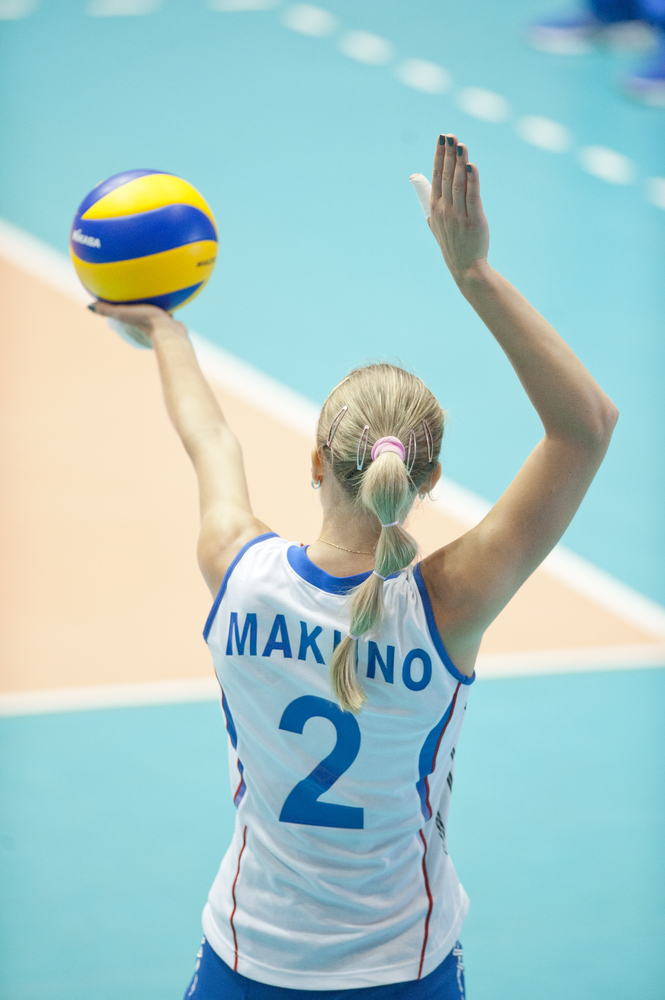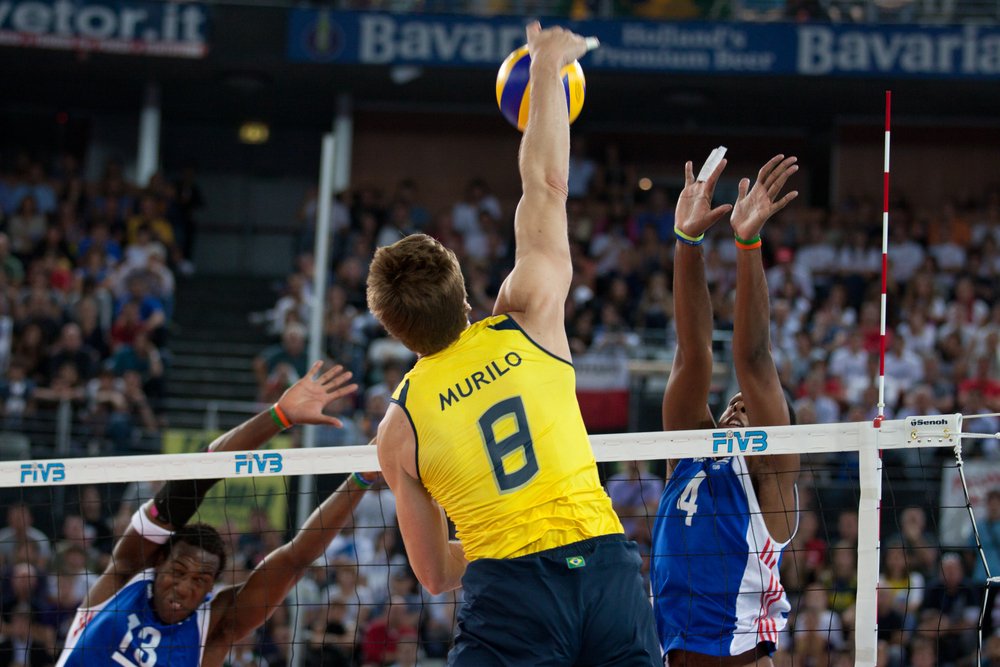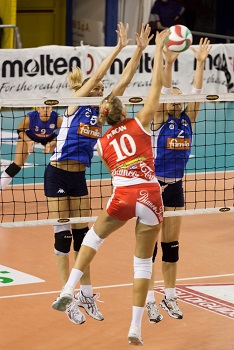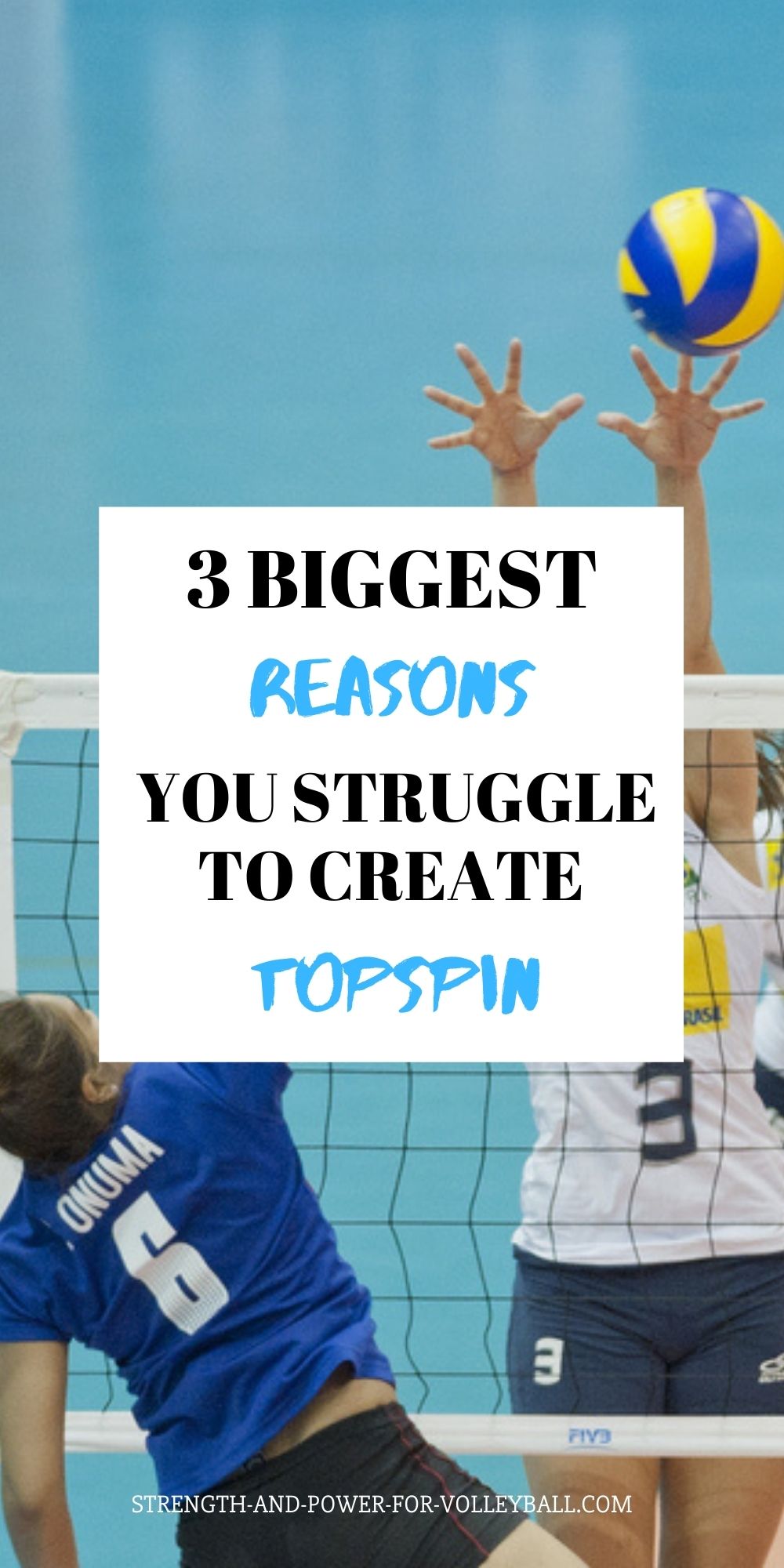Topspin Volleyball Attacks and Serves
Topspin volleyball serving and is important because it results in greater ball control. Topspin is also important for spiking accuracy.
Contact Position and Hitting Topspin
There are basically two results of contacting the ball...
- Ball spins
-
Ball doesn't spin
Where ENERGY is sent through the ball has everything to do with
1) Creating a lot of spin,
2) Creating very little spin, or
3) Creating no spin at all.
Float Serve vs Topspin Volleyball Serve
Point A
For a float serve, energy is sent through the center of the ball.
Point C
For a topspin serve, energy is sent through a spot above the center of the ball.
Points B & D
For a topspin volleyball serve that has some side spin, energy is sent through a spot above and
diagonal the center.
Possible Reasons it's Tough to Spike with Spin
The following may be what is keeping you from hitting with spin...
1. Hard Hit = Good Contact? The belief that the harder you spike, the more success you'll have will likely lead to contacting the ball flat resulting in a floating action. Most coaches teach young players to focus on spiking the ball as hard as possible when first learning to spike.
The problem with focusing on spiking the ball hard is the player will contact the ball more in the center (point A) to create more power.
Most players when first starting out playing volleyball have trouble just serving the ball over the net. Contacting the ball in the center will result in more power and therefore the ball will travel farther. For this reason, maybe it wouldn't be such a bad idea to teach topspin serves before teaching how to serve floaters?
2. Contacting the ball too far in front. Many players have trouble spiking with topspin because they contact the ball too far out in front of the body.
Especially when the ball is set off the net, contacting the ball too far in front will result in the ball being struck flat, the ball crossing the net at a lower trajectory, and the ball being blocked or driven into the net.
3. Contacting with a vertical hand. The arm being vertical at contact is good for contacting the ball high, but the hand should be in a cobra position to help create topspin.
If you enjoyed these tips and would like to keep it close to you at any time, just save this pin to your Pinterest Volleyball Training Board.
Hand Position at Pre-Contact
As a coach, have you ever considered teaching pre-contact hand position for spiking?
Vertical Hand vs. The Cobra
Basically, the vertical hand is for floaters, the cobra is for topspin.
In the photo on the right, do you see how the hand is in a vertical position?
This "vertical hand" position is great for serving floaters, but to create topspin, the hand needs to be
curved.
If you don't get the hand in the cobra position, you won't create
topspin.
You've likely been taught to "snap" your wrist when you spike to create topspin.
The idea is to get on top of the ball to help create spin.

Serving a Floater (Vertical Hand)
In the photos below, do you see how the hand is curved?
The hand should be in a curving, claw like position.
More specifically, you want to get your hand in the cobra position at pre-contact.
If you're still having trouble creating topspin, watch yourself on video.
Also, watch your teammates spike.

Topspin Spiking Using the "Claw"
Advantage of Watching Video
The big advantage of watching video is you can watch the hand position in slow motion.
If you watch yourself on video and see how you're contacting the ball, you're
more likely to understand what you're doing wrong. You'll also be more motivated to change because
you can see specifically what to do different.
Watch how the hand stays vertical as you swing through the ball, resulting in
the ball rotating in the air with very little spin.
Watch how the best volleyball players are the best at creating topspin and how
they all end up in the cobra position when spiking.

